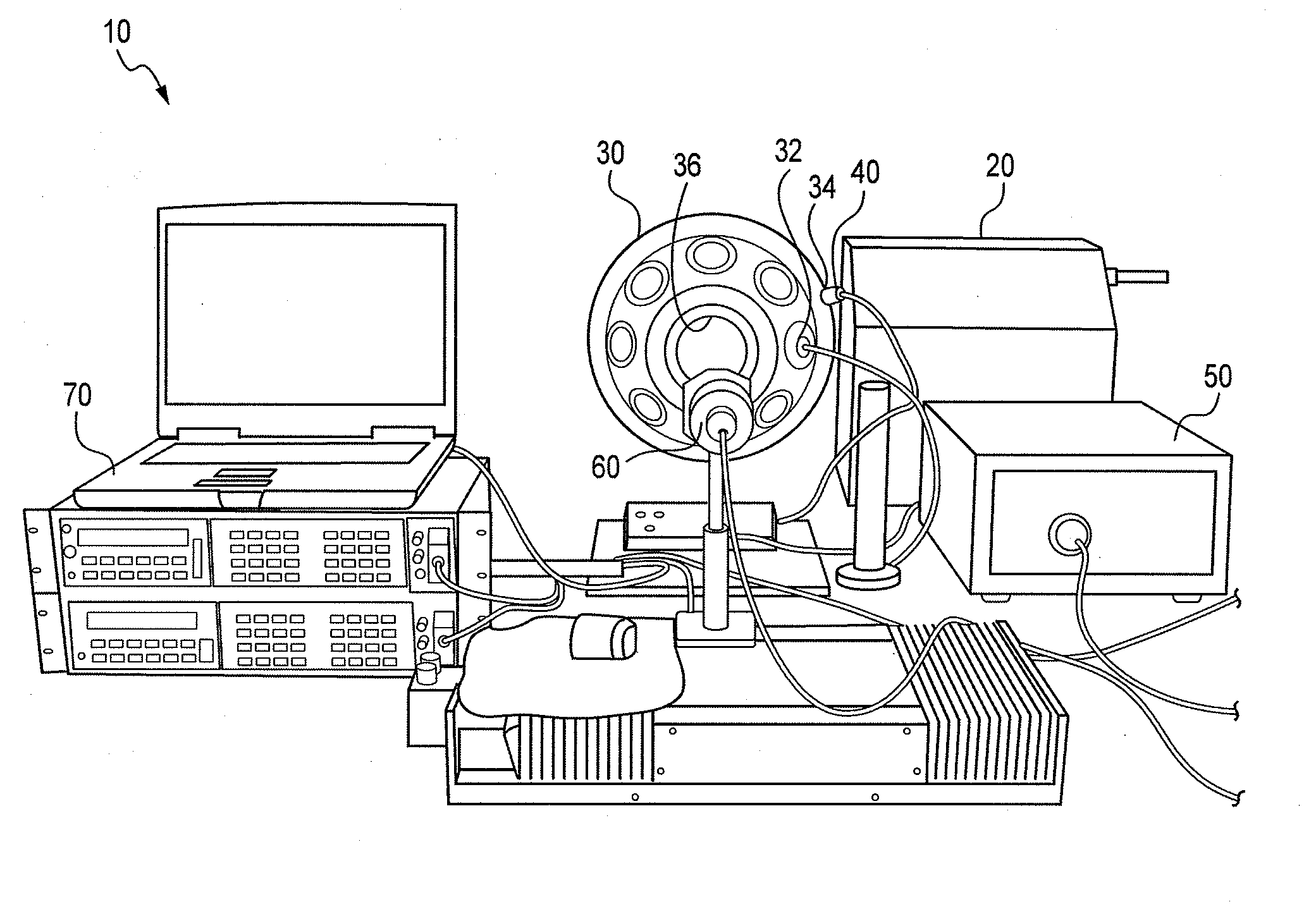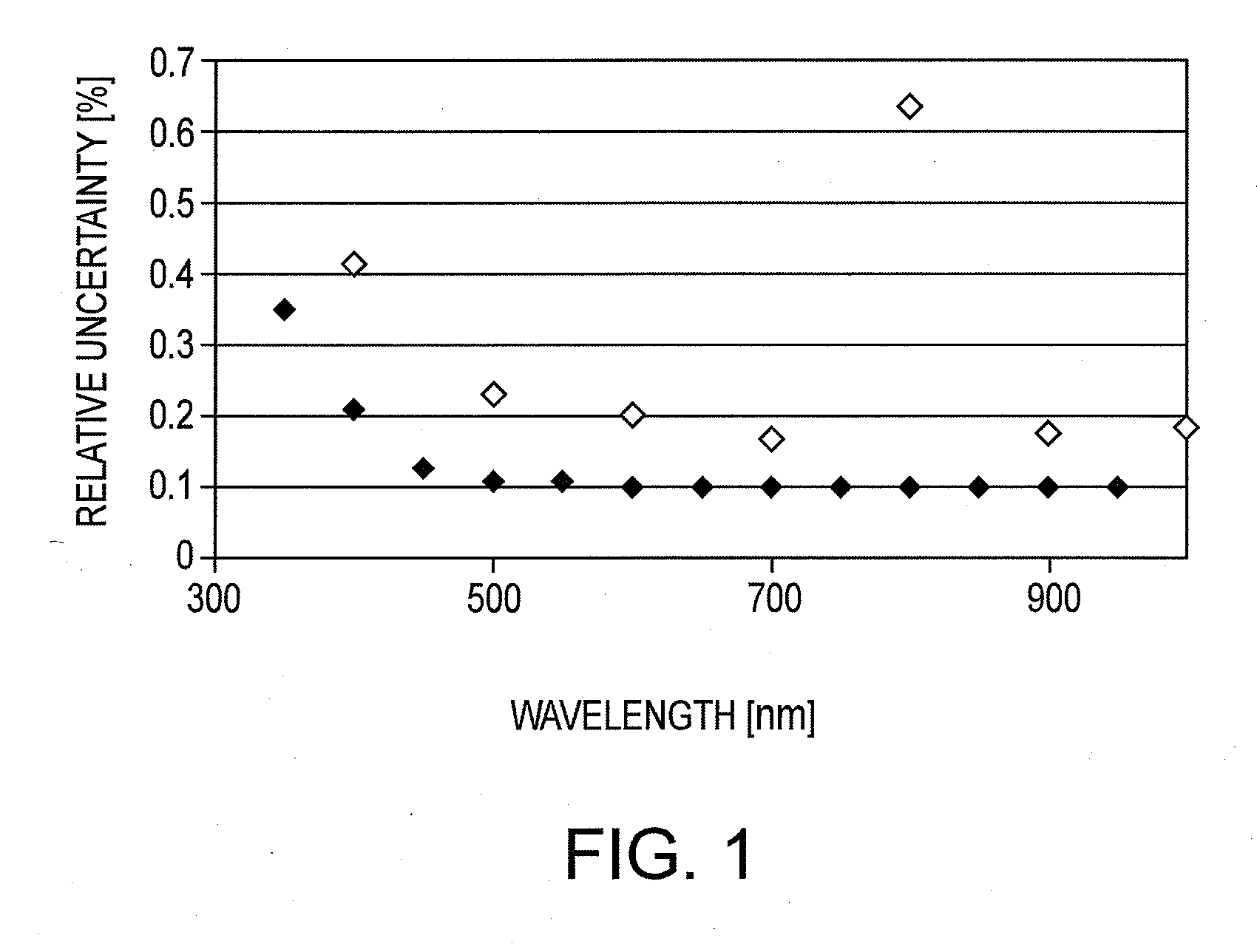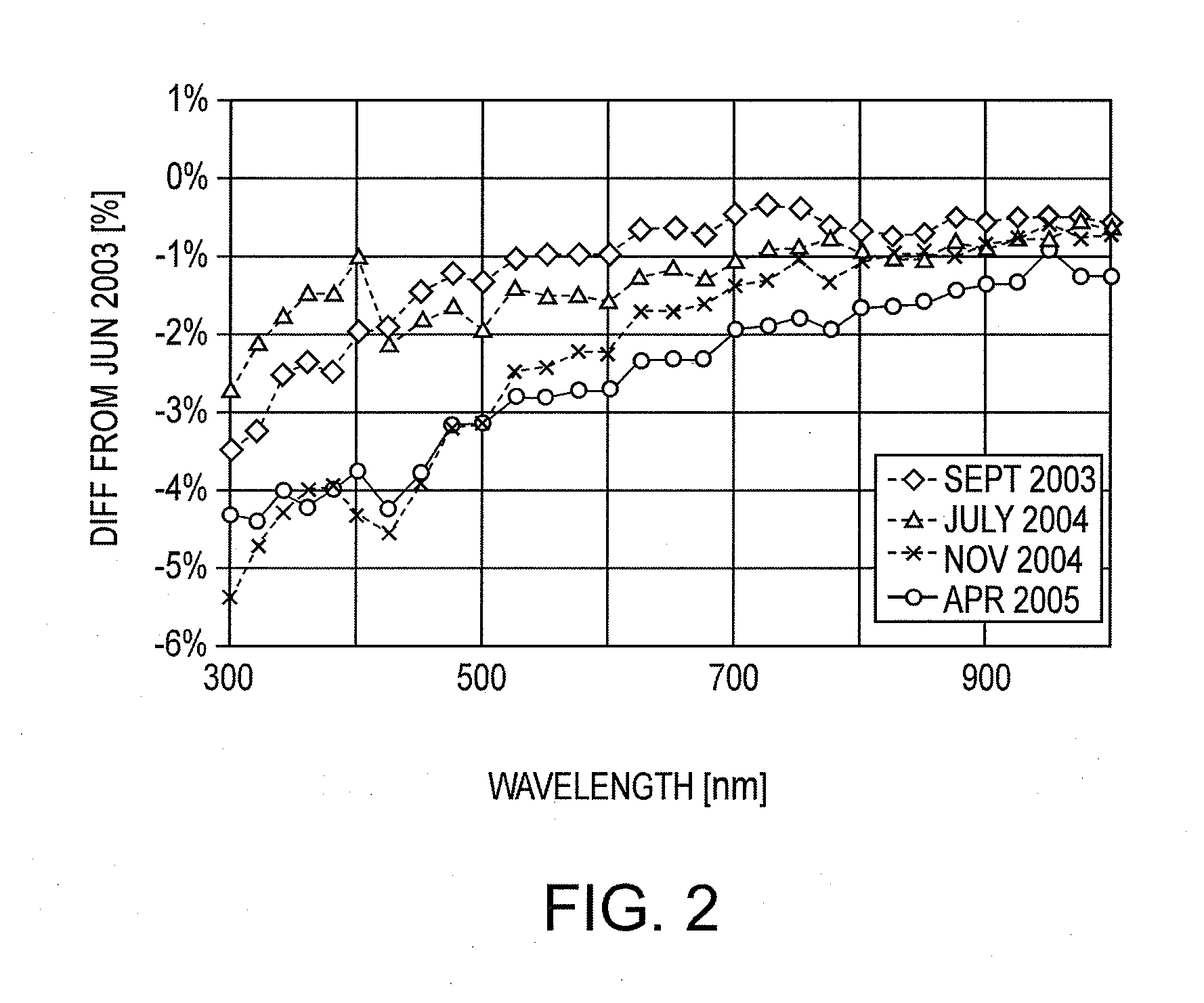Dynamic Spectral Radiance Calibration Source
- Summary
- Abstract
- Description
- Claims
- Application Information
AI Technical Summary
Benefits of technology
Problems solved by technology
Method used
Image
Examples
example 1
Oximetric Imaging of Human Tissue
[0083]A preferred embodiment system can be used for characterizing and / or providing a chemometric scale for oxyhemoglobin (HbO2). The sensor under test would illuminate the integrating sphere, in place of human tissue, use the spectral distribution of the illumination source convolved with a known spectral reflectance signature for a given HbO2 tissue concentration and output a corresponding spectral radiance, as an equivalent to the reflected light from human tissue. A series of such steps can be repeated with variable HbO2 concentrations to provide a chemometric scale. This allows a reproducible substitution of the tissue with a known spectral radiance level. The substitution of the tissue with the preferred embodiment system can be referred to as a Digital Tissue Phantom.
example 2
Epifluorescence Microscope Characterization
[0084]An epifluorescence microscope would have the integrating sphere (or equivalent) inserted where the microscope slide would be mounted. The excitation source from the microscope would be measured for intensity and spectral distribution. The measured source spectral distribution is used to produce a corresponding emission spectrum for a given substance, i.e. green fluorescent protein. The output emission spectrum can either be static or change as a function of time in order to mimic a decaying emission. The preferred embodiment system, in this application, substitutes either a slide specimen or a physical calibration artifact.
example 3
Ocean Color Sensor Characterization
[0085]A sensor used to measure the ocean color (or any spectral sensor ranging from a portable spectrometer to a satellite sensor) can be considered as a sensor under test. The preferred embodiment system would be used to measure the solar spectral irradiance. The measured solar spectral irradiance would be used with a known chlorophyll concentration representative of an open body of water to produce a corresponding water leaving radiance as the output of the preferred embodiment system. This process can be repeated for various chlorophyll concentrations in order to validate the range of the sensor under test.
[0086]The preferred embodiment system is an absolutely calibrated, spectrally tunable detector based source of spectral radiance. A detector based radiance scale is simpler to maintain and offers the possibility of reduced uncertainties in the spectral radiance of the integrating sphere sources with broad spectral distributions over convention...
PUM
 Login to View More
Login to View More Abstract
Description
Claims
Application Information
 Login to View More
Login to View More - R&D
- Intellectual Property
- Life Sciences
- Materials
- Tech Scout
- Unparalleled Data Quality
- Higher Quality Content
- 60% Fewer Hallucinations
Browse by: Latest US Patents, China's latest patents, Technical Efficacy Thesaurus, Application Domain, Technology Topic, Popular Technical Reports.
© 2025 PatSnap. All rights reserved.Legal|Privacy policy|Modern Slavery Act Transparency Statement|Sitemap|About US| Contact US: help@patsnap.com



